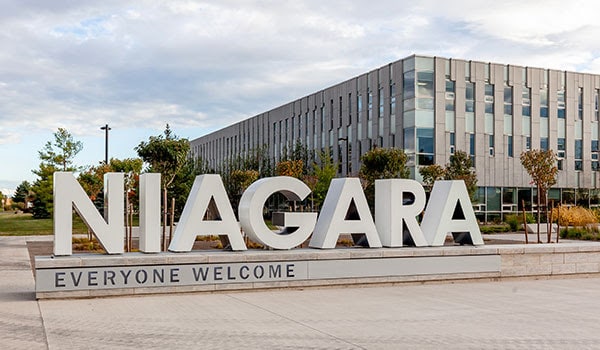What the provincial facilitator will be looking at in Niagara Region
Published August 23, 2023 at 2:26 pm

When the Province appoints a facilitator to Niagara Region on Sept. 11, what exactly will he or she be looking for in the long run?
At the top of the list is housing or more specifically, are regions and cities/towns meeting their provincially mandated housing targets? Provincial Housing Minister Steve Clark set a goal of 1.5 million new homes built by 2031.
Since Niagara’s 12 municipalities, as well as the regional council, all seem willing to meet their individual housing goals, that will likely be neither a pressing nor bothersome issue.
However, one month after the Oct. 24 municipal election, the Doug Ford government passed legislation, allowing Clark to hand-pick the regional chairs in Niagara, Peel and York. While Jim Bradley was likely to be selected as Niagara’s regional chair by the council once again, Clark appointed him without the council’s consent.
The same happened with Nando Iannicca in Peel, and Wayne Emerson in York. In the same legislation, the province also created “provincially-appointed facilitators” to assess the regional governments of Durham, Halton, Niagara, Peel, Waterloo and York.
At the time, Clark said the facilitators would determine “the best mix of roles and responsibilities between the upper and lower tier municipalities.”
This is where it may get tricky with Niagara. On more than one occasion, Ford has stated that Niagara, a two-tier region, has “too many politicians” for an area with 424,000 residents.
Ford compared it to Hamilton, previously amalgamated by then-Premier Mike Harris. Noting that Hamilton has 781,000 residents, he pointed out there are only 15 ward councillors and a mayor.
On the municipal side in Niagara, looking at all 12 cities/towns, that number is considerably larger. Fort Erie has six councillors and a mayor while Grimsby has eight councillors and a mayor. Lincoln has eight councillors and one mayor, the same size as Niagara Falls, also with eight councillors and one mayor.
Niagara-on-the-Lake is serviced by – again – eight councillors and one mayor (or Lord Mayor in this specific case) while Pelham has six councillors and one mayor. Port Colborne has eight councillors and one mayor while St. Catharines, the region’s largest city, has 12 councillors and one mayor.
Thorold also has eight councillors and one mayor while Wainfleet, the region’s smallest town, is served by four councillors and a mayor. Welland elects eight councillors and one mayor while West Lincoln is served by six councillors and one mayor.
That means on the municipal level alone, Niagara at large elects exactly 100 individuals to serve on local councils. It should be noted that all councillors’ positions are considered to be part-time and are paid accordingly.
Since the 12 mayors automatically serve on the Niagara Regional Council, they won’t be included in the following total of those elected specifically as regional councillors. On the regional level, Fort Erie, Grimsby and Lincoln all elect one while Niagara Falls sends three to the region.
Niagara-on-the-Lake, Pelham and Port Colborne all send one councillor to the region while St. Catharines sends six. Thorold, Welland and West Lincoln all send one to Niagara Region while Wainfleet does not elect a regional councillor.
Including the regional councillors, Niagara elects 126 politicians every municipal election. Given those numbers, it would be impossible to suggest that Clark’s facilitator to Niagara won’t be instructed to come up with ways to streamline the political representation.
It is enough of a concern that the councils from Lincoln, Grimsby, and West Lincoln held a private closed-door meeting on August 9 at the West Niagara Agricultural Centre & Fairgrounds in Grimsby. While all involved remain tight-lipped about the meeting, afterwards the three municipalities said they will work together as a unit if the facilitator’s review suggests changes need to be made.
inNiagaraRegion's Editorial Standards and Policies




